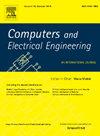Enhancement design of eleven-level cascaded h-bridge motor driver application
IF 4
3区 计算机科学
Q1 COMPUTER SCIENCE, HARDWARE & ARCHITECTURE
引用次数: 0
Abstract
This study focuses on the design and implementation of an innovative eleven-level cascaded H-Bridge motor drive (11L-CHBMD) controlled by a three-phase step-sine pulse width modulation (SSPWM) technique. A novel mathematical model was developed by converting control equations into matrix format, facilitating precise simulation and practical realization of the system. MATLAB Simulink was employed for the simulation, while the STM32F429ZGT6 microcontroller and power MOSFETs were used for hardware implementation. The proposed system ensures a regulated high-voltage, variable-current output and achieves harmonic distortion levels below 5 %, in compliance with IEEE-519 standards. Experimental results showed the motor driver 11L-CHBMD's high capability to drive three-phase induction motors efficiently, offering superior performance compared to conventional topologies. The SSPWM method reduced total harmonic distortion (THD) while maintaining system stability under ohmic, inductive, and unbalanced load conditions. Fuzzy and PID controllers enabled precise torque, speed, and current regulation while stabilising faster. The 11L-CHBMD proposed circuit, developed using commonly available components, achieves a cost reduction of approximately 90 % compared to market-available designs, making it suitable for industrial, renewable energy and different applications. Its modular design supports scalability and offers potential for driving motors in hazardous environments or remote areas using solar energy. With its adaptability and efficiency, the proposed 11L-CHBMD stands as a compelling alternative to traditional power inverters.
求助全文
约1分钟内获得全文
求助全文
来源期刊

Computers & Electrical Engineering
工程技术-工程:电子与电气
CiteScore
9.20
自引率
7.00%
发文量
661
审稿时长
47 days
期刊介绍:
The impact of computers has nowhere been more revolutionary than in electrical engineering. The design, analysis, and operation of electrical and electronic systems are now dominated by computers, a transformation that has been motivated by the natural ease of interface between computers and electrical systems, and the promise of spectacular improvements in speed and efficiency.
Published since 1973, Computers & Electrical Engineering provides rapid publication of topical research into the integration of computer technology and computational techniques with electrical and electronic systems. The journal publishes papers featuring novel implementations of computers and computational techniques in areas like signal and image processing, high-performance computing, parallel processing, and communications. Special attention will be paid to papers describing innovative architectures, algorithms, and software tools.
 求助内容:
求助内容: 应助结果提醒方式:
应助结果提醒方式:


